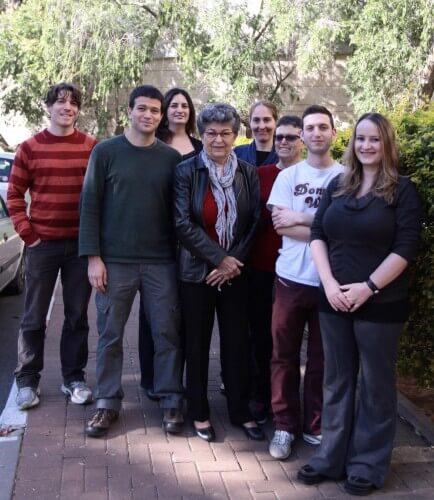How do cells get into a bad culture, and turn from polite and tame creatures, who obey the rules and divide only when necessary, into cancerous cells that proliferate uncontrollably? Is this wild behavior the product of faulty genes, or maybe something else is pushing them in the cancerous direction?

How do cells get into a bad culture, and turn from polite and tame creatures, who obey the rules and divide only when necessary, into cancerous cells that proliferate uncontrollably? Is this wild behavior the product of faulty genes, or maybe something else is pushing them in the cancerous direction?
Until recently, the only factor thought to play a role in this scenario was genes. Indeed, genetic mutations, which accumulate in the DNA of the cell during its divisions throughout its life, are a major factor in the development of a cancer tumor. But scientists have come to the conclusion that mutations are not the whole story: they cannot fully explain the process by which an average, law-abiding cell becomes a cancerous cell.
An idea that has begun to gain momentum in recent years is that, parallel to the genetic changes, epigenetic changes also occur in the DNA (literally: above the genes), and that they play an important role in "starting" the cancer process and its development. The epigenetic changes affect the genetic material "from the outside", and do not involve changes in the DNA sequence, but they are inherited to the next generation of cancer cells. One of the important epigenetic mechanisms is DNA methylation: a chemical compound (called methyl) binds to various genes, and "turns off" them. In normal cells, this system prevents genes from being expressed at the wrong times and places.
The mechanism of methylation has been studied in depth, focusing on its role in the early stages of life. The accepted opinion among scientists is that most of the changes in DNA methylation occur before and during embryonic development, after which the cells and their descendants are "locked" in the methylation pattern that was created. However, it is also known that cancer cells have different methylation patterns than healthy cells. How, then, do these changes take place? Dr. Amos Tanai, from the Department of Computer Science and Applied Mathematics and the Department of Biological Control, and Prof. Verda Rutter, from the Department of Molecular Biology of the Cell, decided to investigate the methylation of genes in healthy cells during their maturation and division, with the aim of discovering new information about changes that may cause cancer.
The two scientists and their research groups combined research methods and approaches from several scientific fields: Dr. Tanay is a computational biologist, who developed computerized methods for "extracting" valuable information from vast amounts of genetic data. Prof. Rutter is a biologist, who developed in her laboratory unique experimental methods for studying the genetics of cancer cells. Gilad Landan, a joint research student of Prof. Rutter and Dr. Tanay, participated in the study; Dr. Zohar Mochmal, Neta Mendelson Cohen and Amir Bar from Dr. Tanai's group, Naomi Goldfinger and Dr. Alina Molchedsky from Prof. Rutter's group; and Dr. Einav Nili Gal-Yam, an oncologist in the "Talfiot" program at the Sheba Sheba Medical Center. The team of scientists created cultures of healthy and "eternal" cells, which continued to divide even at an extreme age - up to 300 divisions. The team developed methods that enabled real-time monitoring of the methylation of the genome in these cells during their development, and analysis of the methylation patterns.
The research findings challenge the assertion that methylation in cells is established at an early stage, and is maintained, more or less, throughout the life of the cell: during the experiment, the methylation sites in the tested cells changed. The changes were mainly random, so that the methylation patterns in the different cells - which were identical at the beginning of the experiment - accumulated variation, which increased with each further division of the cells. In general, the number of genes to which a methyl group is attached has increased over time. Upon reaching the 300th division, abnormal methylation patterns were seen in the cells, and many of them were on the verge of becoming cancer cells. These findings were recently published in the scientific journal Nature Genetics.
Creeping epigenetic changes may encourage the cells to adopt a cancerous "lifestyle" because they may have a "sterilizing" effect on the genome - that is, they prevent its repairs. "An old cell, or a cell that has undergone too many divisions, may continue to maintain most of its function, because certain genes, which are in regular, daily activity, are protected from methylation," says Dr. Tanai. "On the other hand, such a cell may find itself unable to respond to various types of DNA damage or mutations that can cause cancer, because many other genes - such as, for example, those that are activated only in an emergency - may be silenced following epigenetic changes random".
The team of scientists is currently investigating the significance of their findings in cancer patients. On the one hand, they are interested in knowing more about the methylation patterns in cancer cells taken from these patients. On the other hand, the scientists suspect that the epigenetic changes may also help the cells maintain their bad behavior along the slippery slope of the cancer process. Among other things, they seek to investigate how different methylation patterns may affect the response of cancer cells to chemotherapy.

One response
Interesting, but it's not news.